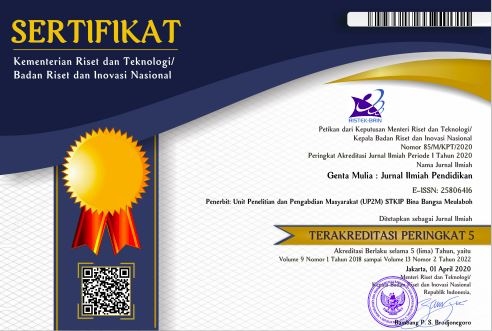EFEKTIVITAS MODEL PEMBELAJARAN STEM DALAM MENINGKATKAN HASIL BELAJAR SISWA PADA PEMBELAJARAN IPAS KELAS IV SDN 1 GUYANGAN
Keywords:
Hasil Belajar Siswa, STEM.Abstract
The background of this research is the lack of innovative learning and the use of learning media, so that
it does not attract students' attention which results in students not being actively involved in learning
and student learning outcomes being low. This type of research is quantitative. This research design
uses PreExperimental Design in the form of One Group Pretest Posttest Design. The population in
this study were fourth grade students at SDN 1 Guyangan. The sample used was class IV students at
SDN 1 Guyangan consisting of 30 students. In this research, data was collected through observation,
interviews, tests and documentation. In the initial analysis, the normality test was used to analyze the
data. The final analysis uses the normality test, hypothesis test, and learning completeness test.
Students showed average learning outcomes of 50.13% without the STEM learning model (pretest),
and 80.93% after treatment with the STEM learning model (posttest). This is reinforced by the results
of the paired t-test calculation that the significance value produced by the paired t-test on the pretest
and posttest results is 0.001 < 0.05, so H0 is rejected and Ha is accepted, and it can be concluded that
the STEM learning model is effective for improving student learning outcomes. in science and science
learning in class IV SDN 1 Guyangan.






